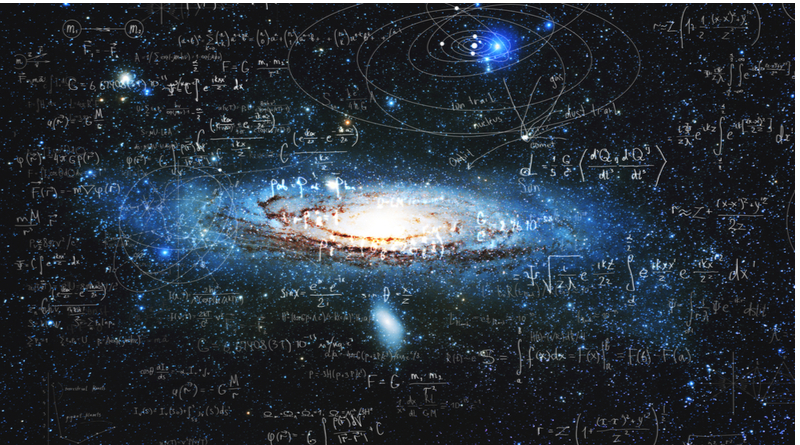What is Astrophysics?
Astronomy is the study of the universe, its objects and how it works. Astrophysics is the branch of Astronomy that applies the laws of physics and chemistry to explain the birth, life and death of stars, planets, galaxies, nebulae and other objects in the universe. The universe can be defined as anything outside of the Earth’s atmosphere.
Astrophysicists seek to understand the universe and our place in it. The goals of astrophysics are to discover how the universe works, explore how it began and evolved, and search for life on planets around other stars.
What 3rd level courses are available?
Universities and colleges in Ireland are offering Physics and Astrophysics courses in the following subject areas:
- Astrophysics – Explore the astrophysics of stars and planets beyond our solar system by examining their properties, structure, evolution and the physical processes that occur within them.
- MSc in Astrophysics & Relativity – Gain advanced knowledge of astrophysics, general relativity, computational science and data analysis and the up-to-date skills required to understand the universe we live in.
- LC Physics: Preparation Course for Leaving Certificate Physics Exam – The objective of this Leaving Cert Physics course of study is to ensure you will be well prepared to succeed in your Leaving Certificate Physics examination.
Studying Physics and Astrophysics in college
There are many Physics and Astrophysics courses that take place over 1 year to 4 years depending on the course and modules selected. There are also part-time courses and night courses available so you can be sure to fit in your studies no matter what your schedule is like.
Courses will cover theory work through lectures, assignments, tutorials and taught modules. Assessments will take place on a continuous basis with written examinations and practical assignments combined in order to achieve a qualification.
You could also consider work experience or get involved in a small way by joining astronomy clubs, attending local astronomy events and keeping up with news in the field. Gaining some work experience at an observatory or astronomical museum would also give you an understanding of how to use equipment and how data is collected.
These types of experiences will not only give you the opportunity to obtain a deeper knowledge and understanding of the industry, it will also give you a chance to do some essential networking with other industry professionals and gain valuable contacts for the future.
Career options
After completing a course in Physics and Astrophysics you will be able to get started in a career that uses specific knowledge of Astronomy and Astrophysics.
Astrophysics research requires a solid understanding of physics, mathematics and statistics, and in some sub-disciplines, knowledge of chemistry or geology may be advantageous. Modern astrophysics research is heavily computer-based, and therefore involves significant data analysis and programming skills.
Working hours will depend on whether you are employed by a company with set business hours or if you are contracted to various facilities or companies. The hours are usually longer than the typical 37 hour week and the hours can often be irregular. Most professional astronomers and astrophysicists will have to put in extra hours to meet funding grant and publication deadlines.
Although it is typical for those in the Astronomy field to physically carry out observations overnight, this type of research is increasingly becoming rare with data now often being collected by remote and space-based telescopes and sent online, allowing the data to be analyzed during normal working hours.
Related jobs include:
- Academic researcher
- Astronomer
- Clinical scientist
- Geophysicist
- Higher education lecturer
- Metallurgist
- Meteorologist
- Nanotechnologist
- Radiation protection practitioner
- Research scientist
- Secondary school teacher
- Clinical technologist
- Data analyst
- Nuclear engineer
- Operational researcher
Further study
After completing a course in Physics and Astrophysics you may choose to pursue further study in a specialist field to increase your knowledge base and skillset. Postgraduate study can also be used as a means to change career focus or to gain professional qualifications required to practise in certain career areas such as geology and earth sciences, physics, mathematics or computer science.
If you’re interested in astronomical instrumentation, either for research telescopes or space missions, then engineering degrees are often a prerequisite.
FAQ
What is the difference between astronomy and astrophysics?
Astrophysics is the branch of Astronomy that concentrates on the physical processes associated with everything that makes up the universe. Astronomy is the study of the universe and everything beyond the atmosphere of Earth.
Why are Physics and Astrophysics important?
Technological developments, transferrable knowledge and spin-offs from Astronomy have important applications in medicine, industry, defence, environmental monitoring and consumer products.
What skills could be helpful for a career in Physics and Astrophysics?
Skills such as analytical and critical-thinking skills, strong research skills and attention to detail, ability to gather, interpret and report data, and extensive math and physics knowledge will all be very beneficial for a career in the Astrophysics or Physics fields.
Where can I study Physics and Astrophysics?
Explore your options here
Did You Know?
- The Moon is lemon-shaped, despite its appearance in the night sky, the moon is nowhere near round. In fact, the Moon is shaped like a lemon, with flattened poles and bulges on both the near and far sides around its equator.
- On Mercury, a day lasts twice as long as a year. Technically, one Mercurian day lasts 59 Earth days, while a year lasts 88. However, due to Mercury’s very eccentric orbit and alignment with the Sun, the length of time from sunrise to sunrise, known as a ‘solar day’, is equal to 176 Earth days — twice as long as a Mercurian year.
- There are stars we will never be able to see. Ever since the Big Bang, most objects in space have been moving away from one another. In fact, cosmic expansion is actually accelerating. As regions of space are whizzing away from one another at an ever-increasing rate, the first population of stars to form in the Universe are now too far away for us to ever hope of spying them – even using the best present or future telescope.
- Black holes have theoretical opposites known as white holes. Black holes are known for their voracious appetites; their influence is so strong that even light can’t escape their gravity. But they have a theoretical converse – white holes. They are effectively the opposite of their dark relatives, spitting out light and matter instead of trapping it. So far, they are purely hypothetical objects; astronomers are contemplating how they could form in reality.
- Neptune takes a whopping 165 years to complete one full orbit around the Sun. Since it was discovered in 1846, Neptune only recently finished its first full post-discovery orbit in 2011.












Comments